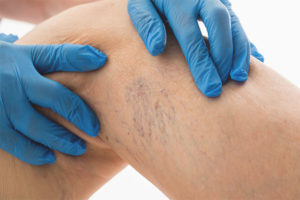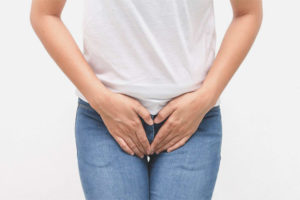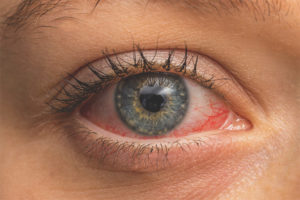The content of the article
Often, a visit to the dentist is accompanied by such an unpleasant procedure as tooth extraction. After this, a person for some time can not come to his senses. During the first day, numbness does not subside - the patient does not feel the cheeks, this causes insane discomfort. In addition, inflammation may begin at the site of tooth extraction, and swelling may appear. It hurts not only the gum, but also the cheek, even the tongue. In this case, you should immediately contact the same doctor who removed the tooth. He will identify the cause of inflammation and prescribe treatment.
Why does edema occur after tooth extraction
The first reason that inflammation and edema appears is that infection, germs, and bacteria enter the open wound. In addition to edema, a person can feel pain in the damaged area, general malaise, an increase in both general and local body temperature.
Edema can be a consequence of the disease itself, in which the tooth had to be removed. For example, with a large tooth decay, the doctor removes the tooth, and part of it (possibly destroyed) remains in the gum. This leads to severe swelling and inflammation. If the dentist is not experienced enough, when removing the tooth, it will damage the gum itself, which also leads to swelling and tenderness of the soft tissues.
Often, puffiness appears after the removal of eights - wisdom teeth. Often, after removal, cysts appear in the gums - voids filled with liquid. It is treated only surgically. Edema can also occur as a result of an allergic reaction to certain medications that were used during tooth extraction.
What to do if the cheek swells after tooth extraction
A tooth was removed and a strong swelling occurred in its place? What to do if not only the gum is swollen, but also the cheek with the tongue? How to get rid of edema quickly and effectively? Let's try to answer all these questions.
- Immediately after tooth extraction, not only a sterile piece of cotton wool is put in place of bleeding, but also a small amount of ice in the bag. Do not place open ice on the gums. Firstly, it can cause hypothermia, and secondly, melting ice can lead to infection of an open wound. If ice has not been applied, do so as soon as possible. Cold constricts blood vessels, relieves inflammation and soreness. The ice should be kept on the wound for half an hour after tooth extraction and then apply cold for five minutes three times a day for a couple of days. This will quickly get rid of edema. Ice can also be applied from the outside of the cheek.
- Oddly enough, but stress enhances the formation of edema and inflammation. It is clear that it is difficult to survive tooth loss physically and mentally, but you need to drink a sedative and treat the resulting edema.
- You can rinse your mouth with sea water. To do this, in a glass of warm water, dissolve a third of a teaspoon of salt, half a spoon of baking soda and five drops of iodine. Rinse your mouth with this compound to relieve pain, swelling and redness. However, be careful - rinsing too intensely is not worth it. The fact is that with a strong stream of water, a cork that has only recently tightened the bleeding gum can come off. This can trigger repeated bleeding.
- On sale there is an excellent gel Metrodent, which fights with various kinds of inflammation on the mucous surface of the oral cavity. It is enough to apply a little gel on the wound and try not to touch the treated area with the tongue. You can also do the treatment in the form of lotions - apply a little gel on a sterile cotton swab and attach to the wound. So the medicine will last much longer.
- Rinse the oral cavity with furatsilin well. This is an antiseptic drug that fights with various kinds of microbes and bacteria. Just crush it into powder, pour boiling water and mix thoroughly. When the composition has cooled, rinse their mouth every 2-3 hours.
- A solution of potassium permanganate will help to cope with inflammation and swelling. Prepare a pink solution and strain it through cheesecloth. This is done so that parts of potassium permanganate do not get on the mucous membrane and cause a burn. Rinse your mouth with the solution as often as possible.
- If you feel severe pain or general malaise, you can take painkillers and antipyretics - paracetamol, ibuprofen, etc. But aspirin must be discarded - it can provoke increased bleeding from an open wound.
Using our tips is very simple - the ingredients for the preparation of various formulations are in any home medicine cabinet. But if there is not even a first-aid kit at hand - do not despair, we know many popular recipes that will help you relieve swelling and get rid of pain.
Folk remedies for edema after tooth extraction
- Chamomile. A decoction of chamomile will soothe the wound, relieve inflammation, and prevent infection by germs. To prepare a decoction per liter of water, you need a couple of tablespoons of dried flowers. Rinse your mouth at least three times a day.
- Oak bark. It should be prepared the day before you go to the dentist. The night before, pour a couple of spoons of chopped oak bark with boiling water and leave the broth to infuse in a thermos. After removing the teeth, rinse the filtered structure of the mouth 4-5 times a day. Oak bark will relieve pain, remove redness and swelling.
- Calendula. This plant has a pronounced antiseptic effect. Pour a couple of tablespoons of calendula with boiling water and cover the jar with a lid. Let it brew for a couple of hours. When the broth becomes warm, it must be filtered and rinsed with their mouth three times a day.
- Propolis. Propolis solution can be bought at the pharmacy and rinse their mouth. However, it can be cooked at home. A piece of propolis should be boiled in a water bath for about an hour so that all useful substances come out of it. Rinse the mouth with propolis broth 3-4 times a day to protect the open wound from infection and accelerate the healing process.
- Salt. If pus formed at the site of the edema, then before going to the doctor you can rinse your mouth with saline. Dissolve a teaspoon of coarse salt in a glass of warm water and rinse your mouth with the composition every 2 hours. From such manipulations, pus is brought out.
- St. John's wort and sage. Prepare a decoction of these medicinal herbs - three tablespoons of dry collection per liter of boiling water. Let it brew, strain and rinse your mouth every hour and a half. St. John's wort will help the wound to heal as soon as possible, and sage soothes the gums, relieves swelling and inhibits the inflammatory process.
In the preparation of broths, you can use both green and dried (pharmacy) herbs.
In some cases, the swelling can be so severe that the only way to deal with it is to use antibiotics. This usually happens when pathogens enter the wound.
In order to subsequently prevent the appearance of edema and inflammation after tooth extraction, you need to follow some precautions. After visiting the dentist, do not lift weights and do not exercise - this can provoke increased bleeding and inflammation in the affected area. In addition, you can not eat within three hours after tooth extraction. Use a toothbrush with soft bristles, eat only warm and soft food, protect the gum from injury from hard objects. And then such a problem as edema after tooth extraction you will not arise.
Video: what to do after tooth extraction











Submit